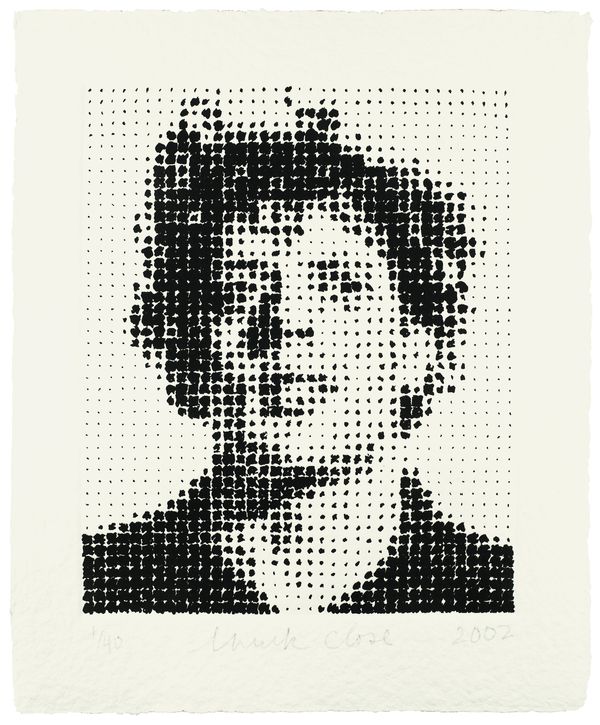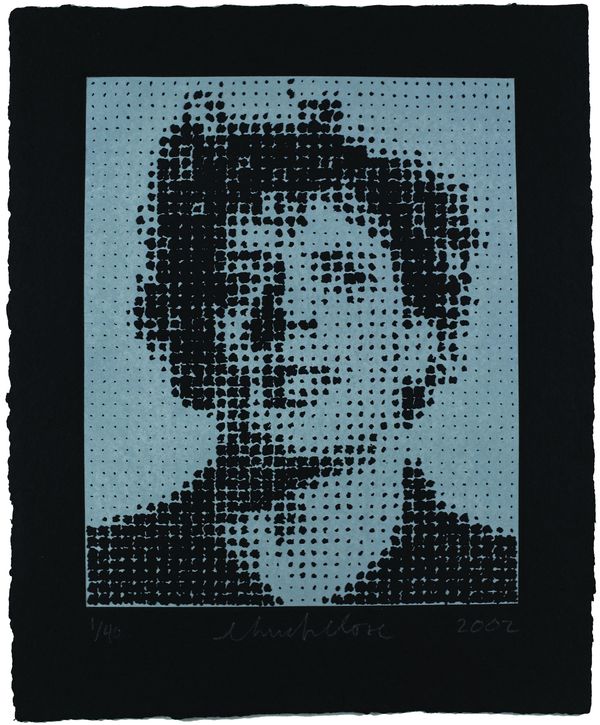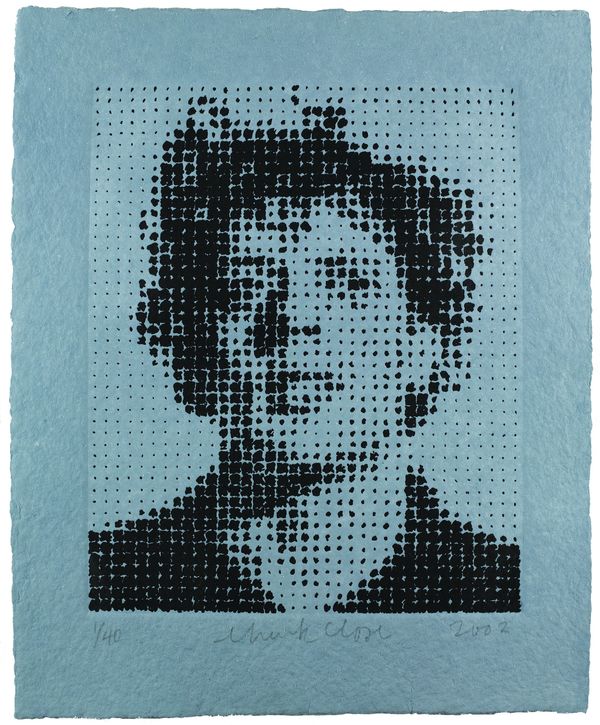Three relief prints with embossment on handmade, dyed paper
Dimensions: 67 x 56 cm each
Signature, inscriptions, markings: each signed at lower middle, dated at lower right, numbered at lower left
Copy Number: 1/40
Editor: Edition Schellmann, Munich/New York
Accession Number: 1002695.1–3
Amazement and fascination - these are the goals of Chuck Close's blow-up passport pictures.1 Since the 1960s, he has been taking Polaroid photographs of friends and acquaintances - in this case the composer Philip Glass - in order to transfer or print them in a second step into an oversized painting. Close divides the halves of the face into coordinates and uses a different photograph focused on each part. He then enlarges them, assembles them into an image conglomerate, and transfers them by hand into another genre of fine art. Characteristic details such as pores, wrinkles, or hair thus appear sharper than in reality - in other words, hyperrealistically.
In fact, it is because of the enlargement of the head that one initially pauses and pauses. Close is not primarily concerned with the person depicted, but with the artistic transformation of a photograph into graphics or painting, i.e. into a handcrafted, usually larger-than-life image. In this way, the artist wants to surpass the illusion of a photograph. Through the rasterization on the one hand and the painterly ductus and the quality of the image carrier on the other, the portrayed persons emerge from the discarded document of the snapshot to new life. Since 1981 Close has been using - as in this work - handmade paper pulp, which he pours through a grid. This creates the relief-like image grid in various shades of gray that captivates the viewer's gaze. Only through his participation, his active seeing, does the respective face become recognizable as a connection between parts and whole. Only at a distance from the picture surface can the facial features of a person be seen, only there do the details come together to form an overall impression. As a neo-impressionist and hyper-realist, Close draws the viewer into the spell of his pictures, which combine a meticulous, microscopic view of physical details with the distancing through the raster process, which aims at the essence of a person. With this artistic process, photography is surpassed, so that the viewer's gaze can experience a new vitality.
Melanie Bollmann
1 Madeleine Grynsztejn, Siri Engberg (Hrsg.), Chuck Close. Self-Portraits 1967–2005, Minneapolis 2005.


